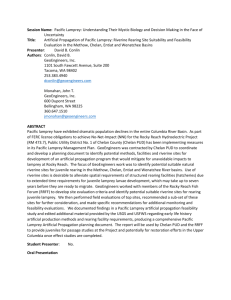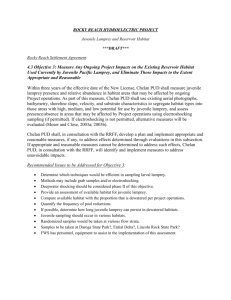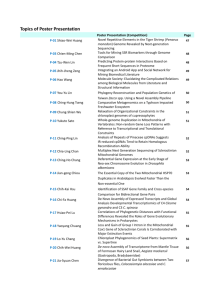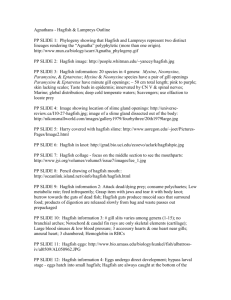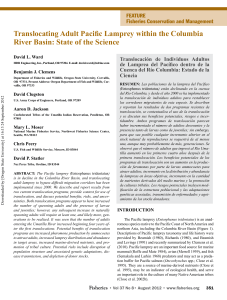Abstract
advertisement
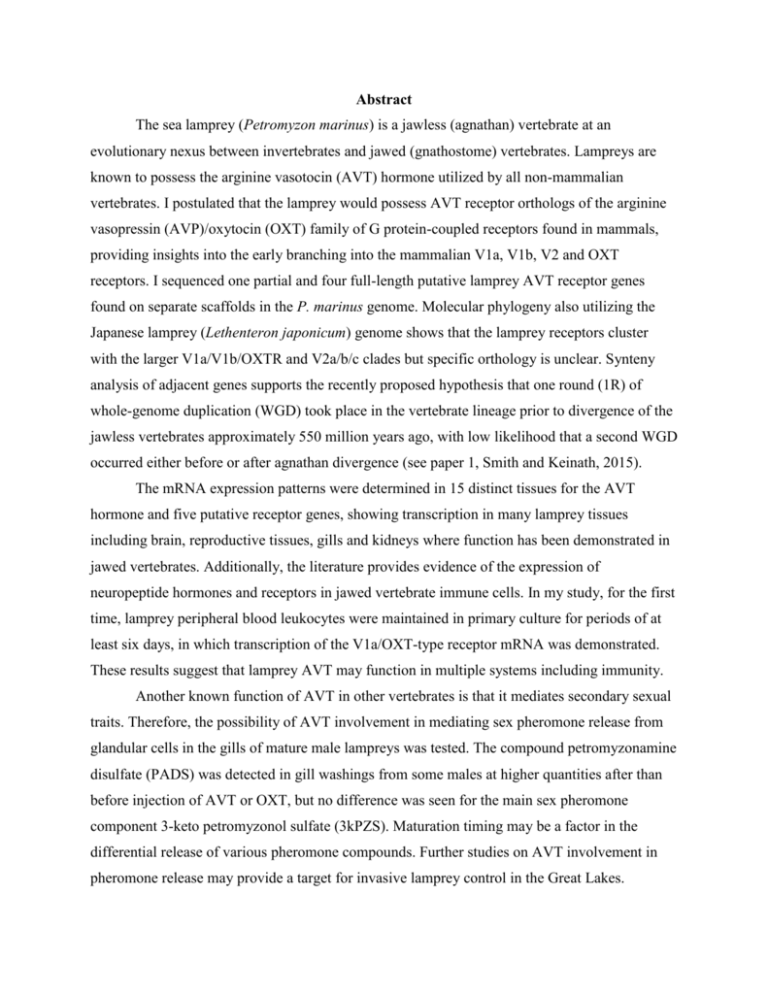
Abstract The sea lamprey (Petromyzon marinus) is a jawless (agnathan) vertebrate at an evolutionary nexus between invertebrates and jawed (gnathostome) vertebrates. Lampreys are known to possess the arginine vasotocin (AVT) hormone utilized by all non-mammalian vertebrates. I postulated that the lamprey would possess AVT receptor orthologs of the arginine vasopressin (AVP)/oxytocin (OXT) family of G protein-coupled receptors found in mammals, providing insights into the early branching into the mammalian V1a, V1b, V2 and OXT receptors. I sequenced one partial and four full-length putative lamprey AVT receptor genes found on separate scaffolds in the P. marinus genome. Molecular phylogeny also utilizing the Japanese lamprey (Lethenteron japonicum) genome shows that the lamprey receptors cluster with the larger V1a/V1b/OXTR and V2a/b/c clades but specific orthology is unclear. Synteny analysis of adjacent genes supports the recently proposed hypothesis that one round (1R) of whole-genome duplication (WGD) took place in the vertebrate lineage prior to divergence of the jawless vertebrates approximately 550 million years ago, with low likelihood that a second WGD occurred either before or after agnathan divergence (see paper 1, Smith and Keinath, 2015). The mRNA expression patterns were determined in 15 distinct tissues for the AVT hormone and five putative receptor genes, showing transcription in many lamprey tissues including brain, reproductive tissues, gills and kidneys where function has been demonstrated in jawed vertebrates. Additionally, the literature provides evidence of the expression of neuropeptide hormones and receptors in jawed vertebrate immune cells. In my study, for the first time, lamprey peripheral blood leukocytes were maintained in primary culture for periods of at least six days, in which transcription of the V1a/OXT-type receptor mRNA was demonstrated. These results suggest that lamprey AVT may function in multiple systems including immunity. Another known function of AVT in other vertebrates is that it mediates secondary sexual traits. Therefore, the possibility of AVT involvement in mediating sex pheromone release from glandular cells in the gills of mature male lampreys was tested. The compound petromyzonamine disulfate (PADS) was detected in gill washings from some males at higher quantities after than before injection of AVT or OXT, but no difference was seen for the main sex pheromone component 3-keto petromyzonol sulfate (3kPZS). Maturation timing may be a factor in the differential release of various pheromone compounds. Further studies on AVT involvement in pheromone release may provide a target for invasive lamprey control in the Great Lakes. With mRNA expression differing between tissues and life stages, and with the need for the animal to respond to environmental cues, the question becomes: How is gene transcription turned on and off in different tissues at different times to potentially result in various physiological functions and behaviors? I investigated whether DNA methylation of cytosineguanine (CpG) dinucleotides regulates lamprey gene transcription through analysis of the lamprey V1a/OXT receptor gene promoter region. To this end, bisulfite-converted DNA was subjected to High Resolution Melt (HRM) polymerase chain reaction (PCR), pinpointing a region with tissue-specific differences in DNA melt characteristics, indicating differences in methylation level. Sanger sequencing of this region revealed a pattern of methylation at specific CpGs at consistently higher levels in adult heart and larval liver, where the V1a/OXT receptor gene is transcribed to mRNA, than in adult liver where it is not transcribed. Higher methylation of mammalian gene promoters more often turns transcription off, however there are exceptions. The methylated CpG positions in the lamprey promoter are associated with putative binding site sequences for transcription factors including Krüppel-like factor 4 (KLF4); in humans KLF4 binds to these DNA sequences, when methylated, to initiate transcription. A highly conserved putative KLF4 gene was found in the lamprey genome. The results support the hypothesis that CpG methylation is an epigenetic factor that regulates lamprey gene transcription. Additional lamprey V1a/OXT receptor gene promoter regulatory elements such as SP-1 and estrogen response element (ERE) consensus binding sequences were found to be organized similarly to functional OXT receptor promoters in mammals (see paper 2, Harony-Nicholas et al., 2014). The results of my research in the jawless lamprey suggest that, like the multi-functional AVP/OXT receptor family genes in humans and other jawed vertebrates, differential mRNA expression of a putative lamprey AVT receptor is generated through epigenetic interaction with regulatory elements in the gene promoter region. Future studies hold promise for human medical as well as invasive species control applications.


